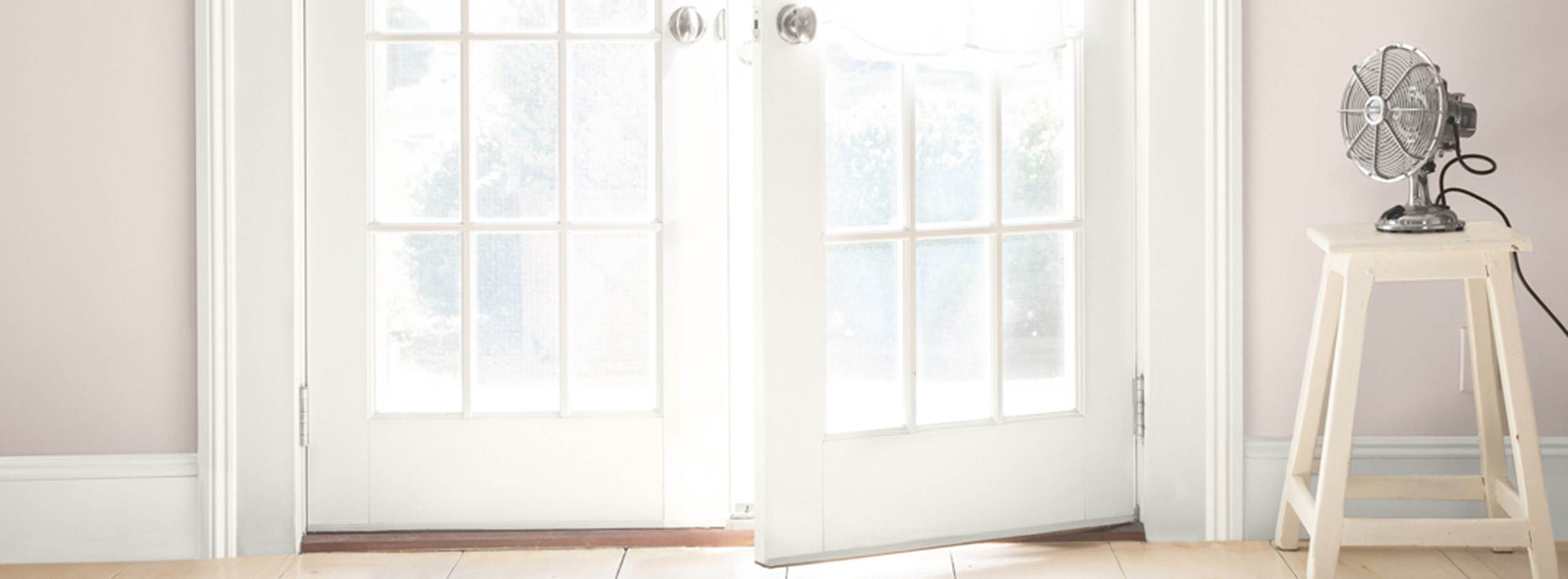Tip #1: Open the Windows
- Temperature, humidity and airflow are the three main components that affect the dry time of paint.
- Regulate all three by opening the windows in the area you’re painting—just make sure the air outside isn’t more humid than the air inside.
- Try to choose the warmest, driest day of the week to tackle your painting project.
Helpful Tip
If there’s a lot of humidity in your project space, you can use a dehumidifier for drying paint. Air-conditioners also act as dehumidifiers. Both individual units and central HVAC systems are a tremendous help in speeding up the drying of paint on humid days.We do not recommend using a heater or infrared heat lamp for drying paint, as any 11-degree change (Celsius) in temperature can potentially impact the paint’s color. For the same reason, we also do not recommend a heat gun to dry paint.
Tip #2: Try a Fan
If you’ve ever questioned, can you use a fan to dry paint? The answer is yes. A fan can help get the air flowing in your painting space. You can use an overhead or freestanding fan to get your paint to dry faster. Just be sure to make sure it’s positioned properly.
Helpful Tip
If using a freestanding fan, be sure to start with a clean project space and keep the fan a few feet away from your painting project to avoid getting debris on your wall or furniture. Also be sure to place the fan at an indirect angle versus directly facing the painted surface.Tip #3: Apply Light Coats
Be sure to keep each coat of paint light and even, and avoid overloading your brush. It can be especially easy to apply too much paint on horizontal surfaces. Applying too much paint will not only slow drying time, it will also delay painting your second coat.
Tip #4: Don’t Paint Your Second Coat Too Soon
- We always recommend two coats of paint for the best hide and color development when painting interior walls or other surfaces.
- Always check the recommendation on the back of the paint can for dry time.
- Check that your paint is dry to the touch before painting a second coat.
Tip #5: Know the Difference Between Dry Time and Cure Time
Remember that dry time and cure time are two different things:
- Dry time is the amount of time your paint needs to dry before you apply another coat.
- Cure time is the amount of time your coating needs to exhibit optimum performance results. The typical cure time for latex-based paints is 2 to 3 weeks.
- Wondering how to speed up paint curing time? The key is to ensure that the paint dries quickly first. Paint cannot cure if it’s not dry.
- If you want to know how to make acrylic paint dry faster or how to make oil-based paint dry faster, each type of paint has a different dry and cure time.
- Acrylic paint, which is the most common paint for most home projects, can dry in one hour and typically takes 2 to 3 weeks to cure.
- Oil-based paint—which is much less commonly used—dries in 8 to 16 hours, but can cure in just five days.

